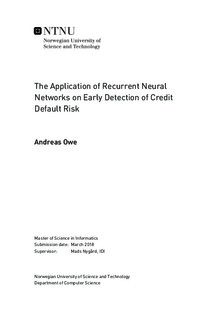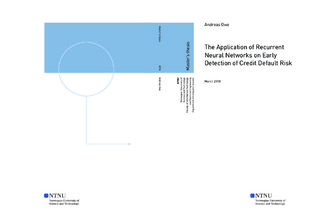| dc.description.abstract | Credit card companies lend money to borrowers on the presumption of the borrowers being able to pay back the borrowed amount plus a fee in the form of interest. There is an inherent risk in lending money: that the borrower will not be able to pay back the borrowed amount, and therefore default on the payment; causing the lender to lose their invested money.
This thesis aims to determine if we can use recurrent neural networks in order to identify defaulted customers based on a customer s account data during their first 12 months with the bank. Several models have been developed in order to examine different properties of the recurrent neural network, and how they impact the model s efficacy. While previous research has used neural networks to classify default, this thesis uses a type of network called a recurrent neural network; which specializes in finding meaning in temporal data.
We have found that by using a recurrent neural network, we can identify defaulted customers within their first 12-month relationship with the bank. The best model was able to accurately classify 90% of the defaulted customers, at the expense of misclassifying some of the non-defaulted customers. | |

